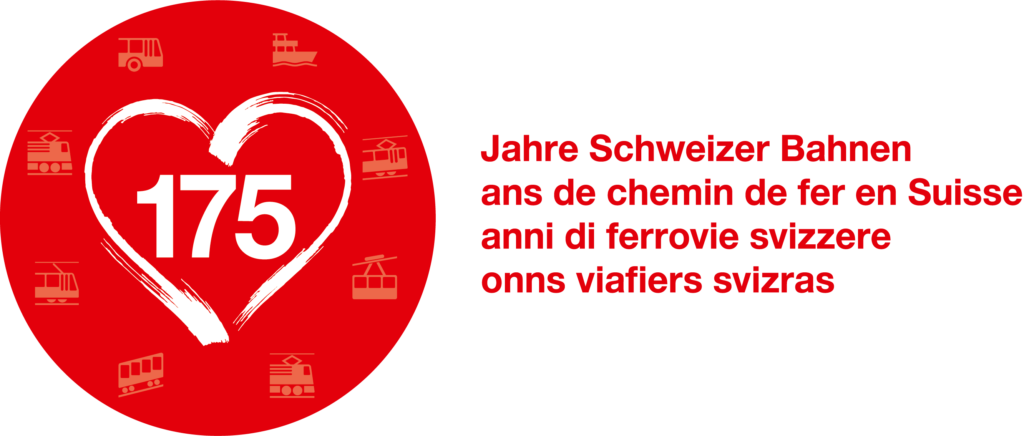Swiss Railways celebrates 175 years
Swiss Federal Railways, a model of efficiency in terms of passengers, punctuality and safety are considered the best in Europe
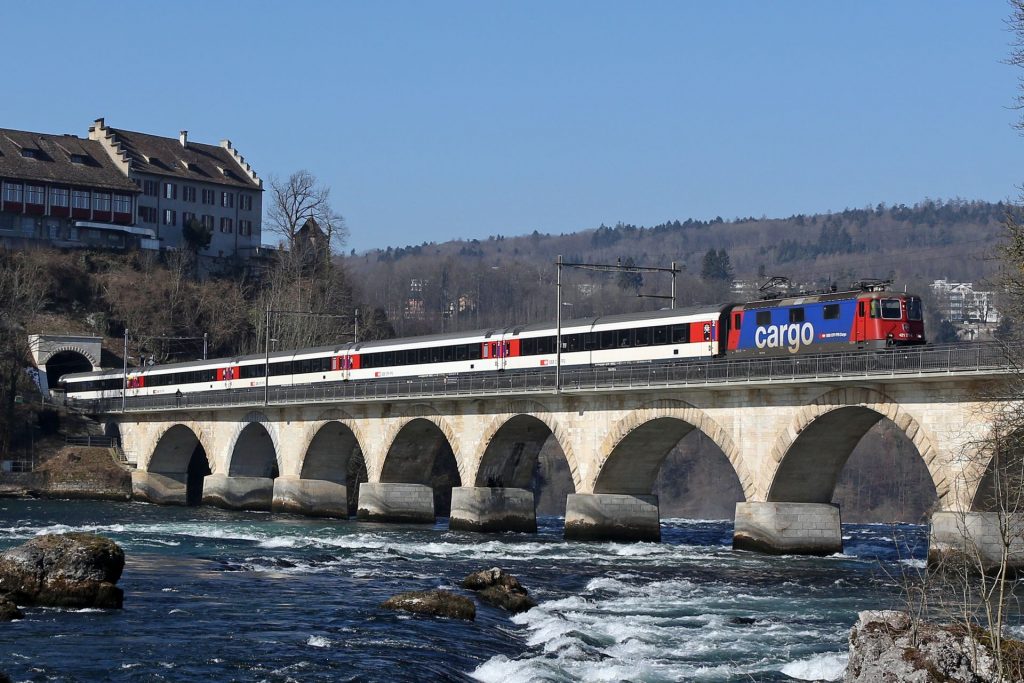
A bit of history
On August 9, 1847, the first Swiss railway line was inaugurated, the “Spanisch-Brötli-Bahn” between Zurich and Baden, marking the beginning of the railway era in Switzerland.Its name seems to be linked to the fact that the Zurich nobility sent their messengers to pick up pastries from a well-known cook and master baker in Baden.This route was operated by the Schweizerische Nordbahn and helped to reduce travel time compared to the traditional carriage: from 3 hours to 45 minutes for a journey of 22.5 km.The first railways were built by private individuals under a concession granted by the cantons. The Confederation provided directives only on matters of a technical nature.In the popular vote of 1898, under the motto “Swiss Railways for the Swiss People”, the supporters of the state-owned railway won with 68% of votes in favor, so from 1902 the newly founded SBB began to take over the railways and to nationalize them.Switzerland is one of the countries with the densest railway network in the world with well-coordinated connections between railways, buses, streetcars, boats and cable cars in all regions of Switzerland and in no other European country do people use the train so much.
The company today
The company called Ferrovie Federali Svizzere (FFS) in Italian, Schweizerische Bundesbahnen (SBB) in German, Chemins de Fer Fédéraux suisses (CFF) in French, Viafiers Federalas Svizras (VFS) in Romansh, with its head office in Bern, operates the Swiss railway network whose capital share is held entirely by the Swiss Confederation.
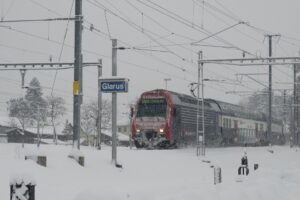
Infographic 175 years Swiss Railway (in French)
The Railways also hold direct or indirect interests in subsidiaries controlled by them (Group companies) including:
- SBB Cargo AG (in which the railroads hold 65%) transports 185000 tons of freight daily.AlpTransit Gotthard AG, (founded on May 12, 1998 and 100% owned by the Swiss Federal Railways) is based in Lucerne and with the tunnels through the Alps shortens the distances between the north and south of the country and Europe.
- Zentralbahn, (a company created in 2005 from the merger of the Brünig railway and the Lucerne-Stans-Engelberg railway, of which the railways hold 66%) operates regional connections between Lucerne, Engelberg and Interlaken.
- Railaway, (SBB company that deals with leisure offers in Switzerland).
- Elvetino (a company operating in the national and international railway catering sector) 100% owned by the railways.
- Transsicura (a subsidiary of SBB from January 2022), 100% owned by the railways, deals with safety in public transport.
- Thurbo (independent and autonomous company of SBB with the participation of the canton of Thurgau) operates regional services in Eastern Switzerland.
- RegionAlps, (a partnership between SBB and TMR with the participation of the Canton of Valais of which the railways hold 70%) operates regional rail services in Valais.
- TiLo (a company owned 50% by Swiss Railways and 50% by Trenord, a railway company in Lombardy) manages cross-border connections between Ticino and Lombardy.
- Lyria (a French company 74% owned by Société Nationale des Chemins de Fer Français – SNCF and 26% by Swiss Railways) operates rail services between Switzerland and France.
- Switzerland Travel Centre (a subsidiary of hotelleriesuisse, Switzerland Tourism, the Swiss Federal Railways as well as several regional railways) is the largest official vacation tour operator in Switzerland.
- SBB GmbH (a wholly owned subsidiary of Swiss Railways) operates cross-border services in the border area between Switzerland and Germany.
Federal Council calls 2021 the “Year of the Railways”
More regional and night trains between Switzerland and Germany
Public transportation in pandemic time under the lens
Elisa Fanton: “By sanitizing the air, almost no contagion!”
Clean energy railways
Switzerland replaced steam locomotives early and electrified its rail network: as early as 1939, 77 percent of the national rail network was electrically powered, compared to a European average of 5 percent.
Today, Swiss railways use 90 percent hydroelectric power and intend to use entirely renewable energy by 2025. This allows them to distinguish themselves in Europe as a model of environmentally friendly railways.
Increase in freight traffic
In the last year, transalpine rail freight traffic reached its highest share in the last 30 years at 74.9%. In order to achieve this result, not only the infrastructure expansions contributed but also the supplementary measures prepared by DETEC, which Parliament approved in 2020 such as the reduction of train path prices and the granting of a special discount to long freight trains, which make rail transport more attractive and allow for more capacity. It was also decided to extend the granting of operating subsidies to combined transport operators until 2030.
Gotthard Base Tunnel
The tunnel known as the “Galleria di base del San Gottardo” in Italian “Gotthard-Basistunnel” in German, “Tunnel de base du Saint-Gothard” in French, “Tunnel da basa dal Son Gottard” in Romansh opened in 2016, with its 57 kilometers, is the longest railway tunnel in the world. It connects the Swiss towns of Erstfeld (Canton Uri) in the north and Bodio (Canton Ticino) in the south.
This tunnel shortens travel times between Zurich and Lugano by up to an hour, and up to 260 freight trains and 65 passenger trains can pass through per day.
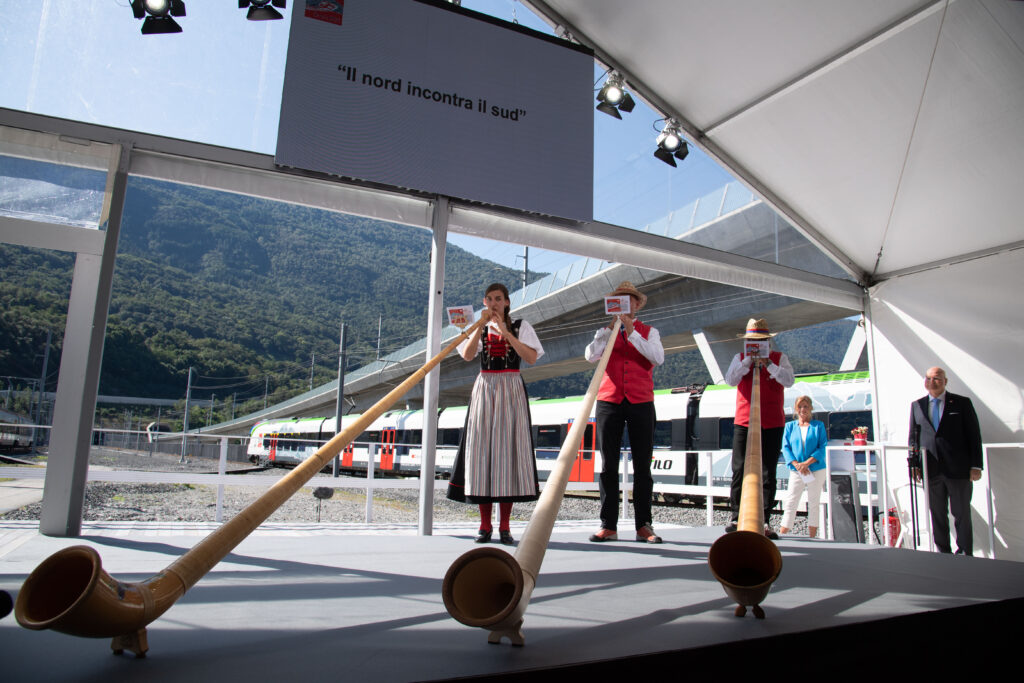
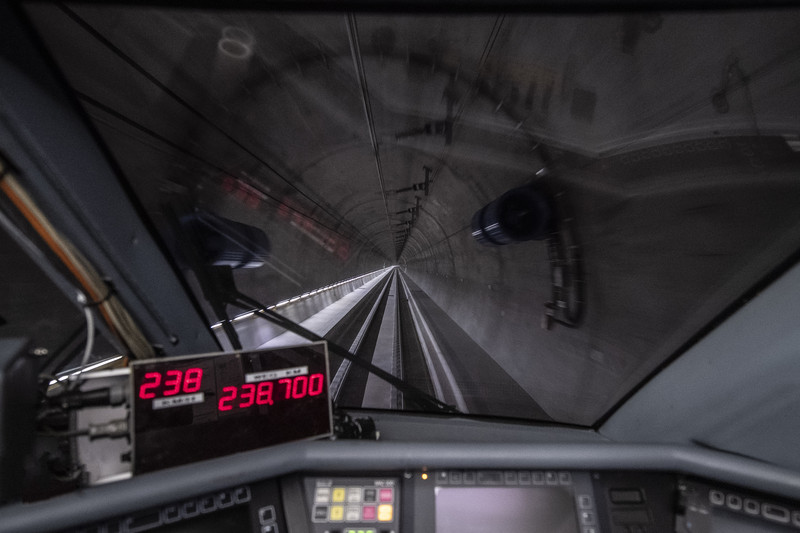
Celebratory Events
During 2022 several celebratory events are planned to celebrate this important milestone.
The ad hoc website www.175-anni.ch has been created where the various events in the different regions of Switzerland can be reached at a special price with the “175 years day card” valid on the day chosen for the round trip between the place of residence and the official location of the event.






